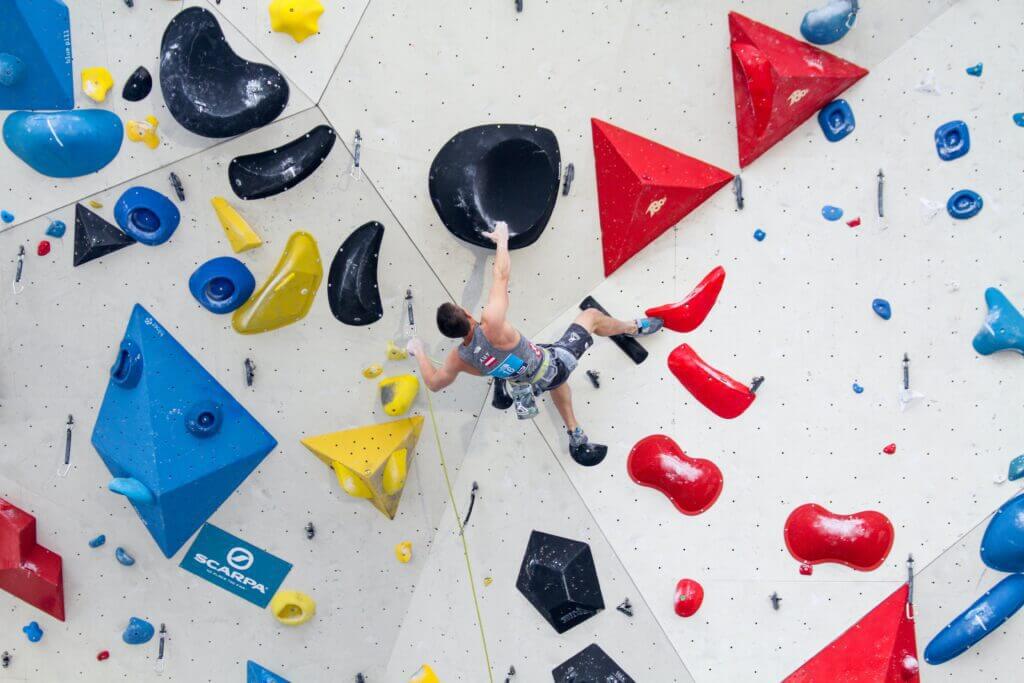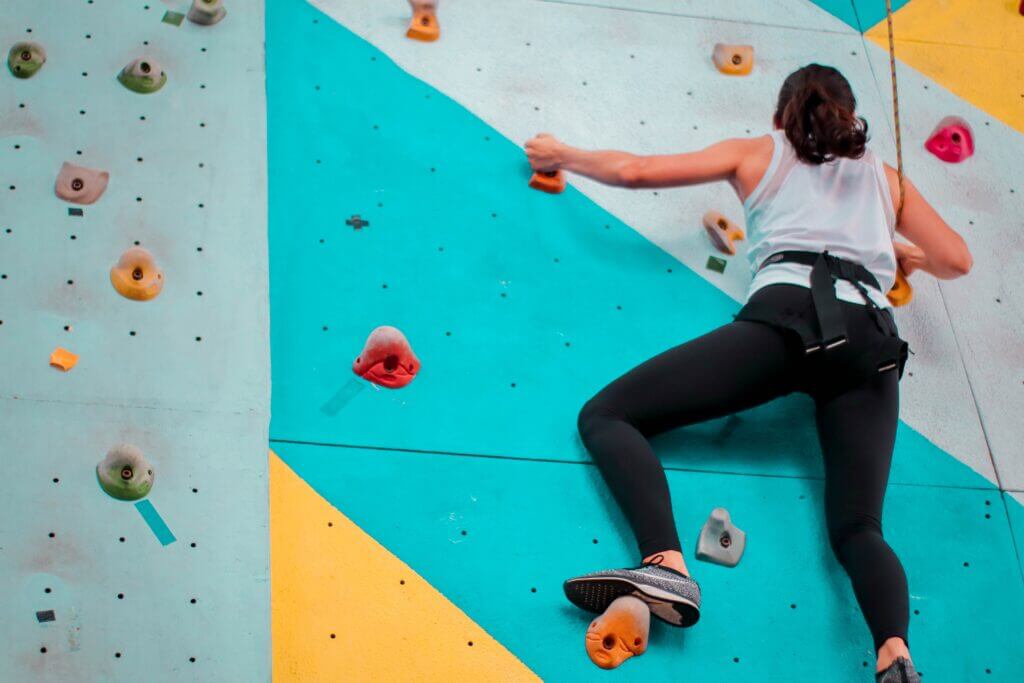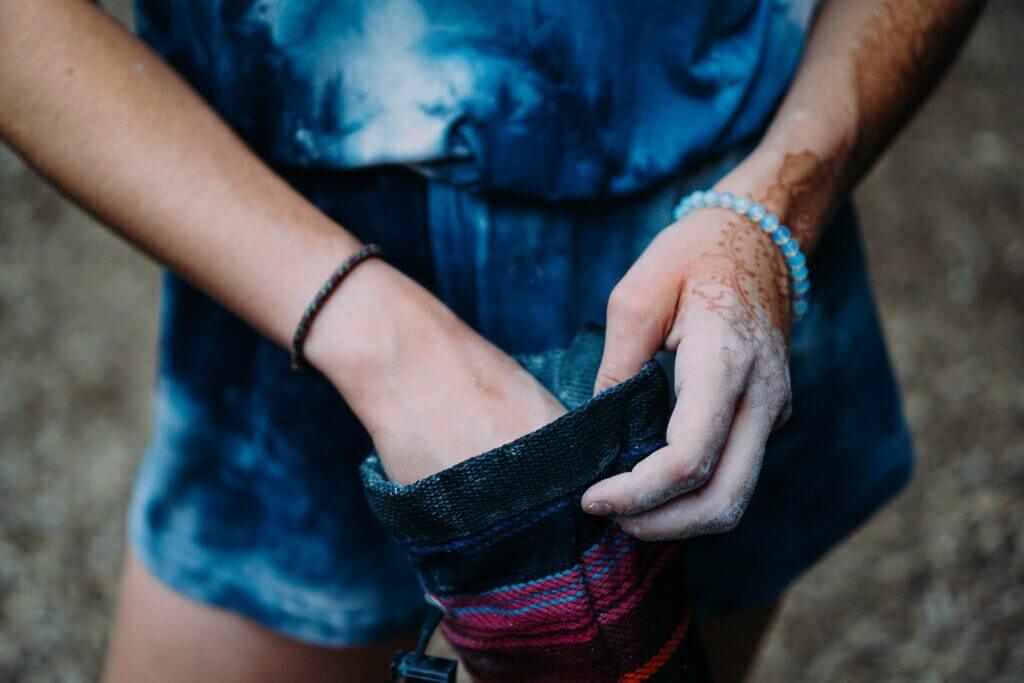What to wear for rock climbing? Indoor rock climbing has gained popularity for its fitness benefits and engaging nature. Aspiring climbers often wonder about the right attire to wear for this exciting indoor venture. Thankfully, specific technical clothing isn’t mandatory for this thrilling yet athletic pastime. Sender One Climbing recommends some practical attire for indoor climbing, which may conveniently be found in your wardrobe!
Rock climbing doesn’t require strict dress codes like team sports or swimming do. Hence, newcomers are often curious about the best attire for climbing. The lack of a specified uniform allows climbers to opt for anything, ranging from conventional sportswear to even jeans, though the latter is subject to personal preference. There isn’t a “one size fits all” outfit for climbing, but following guidelines will help craft a more comfortable and enjoyable climbing experience.
Recommended Attire: Fitness Clothes and Rock Shoes
Exercise attire that is both flexible and modest is ideal for indoor rock climbing. Opt for garments that aren’t overly loose yet not too revealing from the angles often seen in this sport. Most rock climbing gyms offer rock shoes for rent, negating the need for immediate purchase. Nevertheless, remember to bring along easy-to-wear, casual shoes for restroom visits.

The typical male attire at climbing gyms consists of slim-fit tees and shorts, while many women choose sports bras, tank tops, and yoga pants. For those interested in purchasing dedicated climbing clothing, both the climbing wear and yoga wear sections of outdoor retail store REI can be explored.
What to wear for rock climbing? An Expert Guide
If you are still wondering what to wear for rock climbing, here are a few more details. Emphasizing flexibility is essential for indoor rock climbing, as it permits the full extension of both arms and legs, enabling climbers to access distant hand- and footholds.
Light fabrics are advisable for indoor climbing attire, considering they provide comfort. While out in the wild, abrasion resistance is important due to the rugged nature of natural rock surfaces; indoors, the emphasis tends to lean towards more comfortable gear.
A slim fit is favoured when it comes to climbing attire as it avoids the risk of loose clothing obstructing movement or tangling in the rope. Shorts or pants that fit snugly underneath a climbing harness make for sound clothing choices.
Provided a gym environment is climate-controlled, shorts are an appropriate option. However, consideration should always be made regarding undergarments, as fellow climbers may have a direct view from below. Also, though many people are found climbing in pants, the ultimate decision is ruled by personal preference and comfort.
Choosing the Perfect Climbing Top: Recommendations for Indoor Rock Climbing
In terms of upper body attire for indoor rock climbing, any t-shirt or gym top is suitable. The best option would be a piece that isn’t overly loose to avoid any issues with it becoming trapped in belaying devices. Long-sleeved clothing can offer extra protection against scrapes and injuries during the adventure, though a short-sleeved or tank top provides greater breathability.
When it comes to men’s ideal climbing outfit, a slim-fit, stretchy t-shirt, which is breathable and equipped with moisture-wicking properties, is recommended. However, a light t-shirt made from blended fabric would also suffice. As for women, similar options apply, including a slightly loose tank top paired with a sports bra to enhance comfort and breathability.
Choosing the Right Pants for Indoor Rock Climbing
For those beginning their indoor rock climbing journey, shorts or yoga pants make a suitable choice. Shorts should be long enough to cover just above the knee for optimal comfort during intense climbing sessions. Climbing often involves brushing against the wall with your knees and shins, making capris or leggings of three-quarter length a useful option for providing additional protection.

As enthusiasm for climbing grows, investment in specialized climbing pants may be valuable. These are typically designed to be somewhat loose-fitting, equipped with a wider crotch for increased flexibility. They also feature the ability to be rolled up and are composed of materials that are both breathable and durable. Their protective qualities prove especially useful for first-time outdoor climbing experiences.
Essential Advice on Footwear and Hygiene
One vital aspect of rock climbing gear is the climbing shoes. Those who do not have personal climbing shoes can make use of hygienic rented options available in various sizes at climbing locations.
One peculiar thing about climbing shoes is that they are designed to be worn without socks. While these shoes at most gyms are regularly disinfected, some may still feel uncomfortable with bare-skin contact. In such scenarios, wearing thin, low socks can accommodate personal comfort. Additionally, wearing casual shoes, such as Crocs or slip-ons, between climbs is recommended for one’s comfort and to adhere to hygienic practices. Wearing climbing shoes in restrooms can transport germs to climbing holds, causing an unclean environment.

Renting shoes from climbing gyms is commonplace, allowing individuals to become accustomed to the unique fit and sensation of climbing footwear. These shoes feature a firm grip from the sticky rubber on their soles and are designed to fit snugly, slightly curling up the toes. Having an extra pair of easy-to-wear shoes for bathroom visits is practical and ensures hygiene is maintained. Visualize experienced climbers switching to their comfort footwear, such as Crocs or slip-ons, while they belay a fellow climber. Given the intense fit of climbing shoes, slipping them off between climbs is always welcome.
Appropriate Attire for Indoor Rock Climbing: Cautionary Advice
In the world of indoor rock climbing, attire is not just about aesthetics but also comfort and functionality. From different viewing angles within a climbing gym, such as directly above or below climbers, there’s no room for wardrobe malfunctions. One must keep a check on anything that may risk hindering any of the climbing movements.
Interestingly, short shorts can provide ample freedom of movement, but their feasibility for rock climbing might be questionable. This is primarily due to the discomfort caused when sitting back into the leg loops of a harness. The shorts can gather under these loops, causing discomfort, particularly with hard rental harnesses.
Essential and Non-Essential Indoor Rock Climbing Accessories
A lightweight jacket could be an essential addition to your indoor rock-climbing attire. This is particularly useful if the indoor gym’s temperature is set cooler than preferred, often a common occurrence due to air conditioning or heating systems. A light, warm jacket comes in handy, particularly post-climbing, whether taking a break, observing others, or belaying for fellow climbers.
Furthermore, it’s suggested to bring a personal chalk bag. While facilities usually provide or hire major equipment like ropes, harnesses, and belay devices, chalk is usually the responsibility of the individual climber. Having your chalk bag provides a hand grip during climbs.

It’s essential to note that gloves and hats aren’t recommended for indoor rock climbing. Direct contact between climbers’ hands and the climbing holds is crucial for effective grip; therefore, gloves can hinder performance. Climbers’ skin will naturally become more resilient after a few sessions. Similarly, hats could potentially fall off during the activity and cause disruption or accidents. If long hair is a concern, using a hair tie to secure it is a well-accepted solution.
Now you should have a better idea of what to wear for rock climbing!

